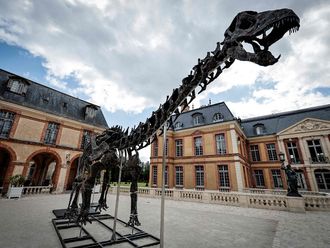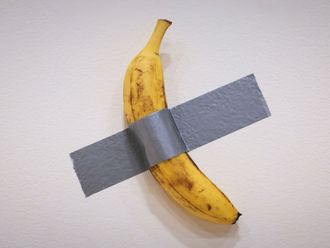Mineral exploration spending in Australia, the world's biggest iron ore exporter, reached a record in March and has risen 35 per cent since a new policy to tax carbon was unveiled last year, the government said.
Spending rose 12 per cent to a record A$1.086 billion (Dh4.02 billion) in the March quarter and the investment pipeline in the resources industry reached an estimated A$500 billion on demand from Asia, Treasurer Wayne Swan said in his weekly economic note on Sunday. The tax on carbon emissions, starting July 1, will reap about A$6.5 billion over two years from the country’s biggest mining companies including BHP Billiton Ltd.
“It’s yet another reality check for those who try to talk down the outlook for our resources sector or make ridiculous claims that important economic reforms are hurting investment,” Swan said. “Asia’s rise will create demand for a lot more than just our iron ore and coal.”
Australia expects to raise A$24.7 billion in four years from the tax as the government tries to reduce emissions and spur investment in cleaner energy. While a resources boom has made Australia one of the fastest-growing economies in the developed world, the policy isn’t helping Prime Minister Julia Gillard’s approval ratings as the local currency’s strength against the US dollar hits the country’s tourism, manufacturing and retail industries.
“While it’s clear not everybody’s in the fast lane, it’s equally clear that the fundamentals of our economy are rock-solid,” Swan said on Sunday.
Annual growth
The mining boom is lifting gross domestic product. Australia's annual growth in the January-March period was the fastest since the third quarter of 2007, a government report showed this month. Growth averaged over the past two quarters was the fastest among countries with Group of 10 currencies tracked by Bloomberg.
Still, a Newspoll survey on June 12 showed support for Gillard’s ruling Labor Party slid even after the central bank lowered interest rates, the economy expanded twice as fast as forecast, and employment growth accelerated.
Labor’s primary vote dropped 1 percentage point to 31 per cent and the Liberal-National opposition fell 2 points to 44 per cent, according to the survey. The poll of 1,146 people was taken June 7-10 and had a margin of error of 3 percentage points.
Reserve Bank of Australia Governor Glenn Stevens earlier this month expressed optimism about the nation’s economic outlook in a speech titled “The Glass Half Full.” Stevens said he felt the need to do some “cheerleading” for the economy in response to negative commentary on the country’s prospects.
Borrowing costs
The Reserve Bank of Australia lowered borrowing costs by 75 basis points in its past two meetings, to 3.5 per cent, benefiting households in a nation where almost 90 per cent of mortgages have variable rates.
The nation’s employment gains from January through May were the most in five years, and the unemployment rate of 5.1 per cent in May is less than half the 11 per cent level of joblessness in the Euro-area.
Europe’s sovereign debt problem will continue to cast a shadow on the global economic outlook, Swan said in Sunday’s notes. Australia shouldn’t lose sight of the fact that it faces the challenges from a position of “unrivalled strength”.
Asia’s share of the global economy has doubled in the past 50 years to more than a third of the world’s GDP and that share is likely to increase to around half of global output by 2030, Swan said.
China, the biggest consumer of Australian resources products, also became the country’s biggest market for services two years ago, according to Swan.
“These healthy fundamentals should be cause for optimism and for seeing the glass as half full,” Swan said.










